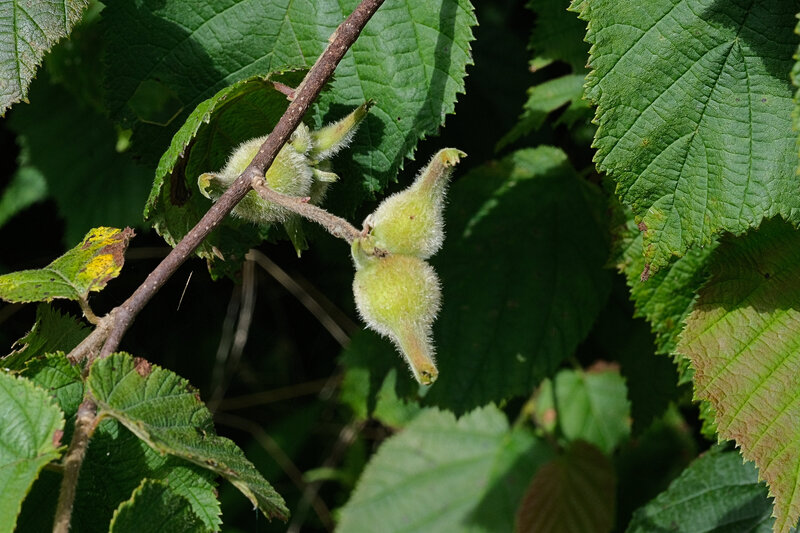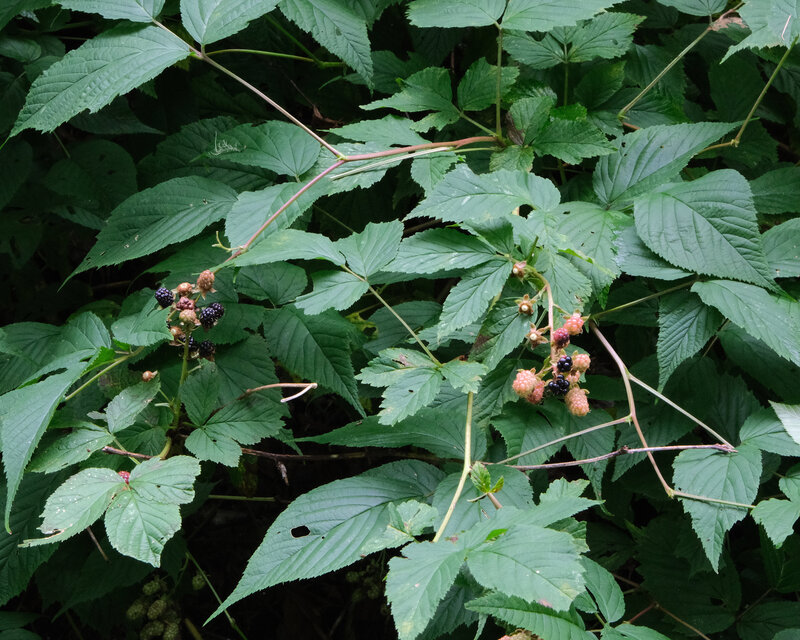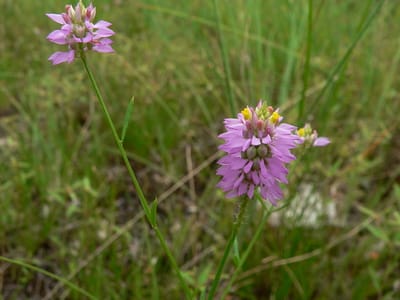Blue Ridge High-Elevation Rock Outcrops (Rocky Summits)
|
Rocky summits are rock outcrops and cliffs of any rock type above 4,000 feet. Expanses of rock and islands of vegetation with stunted trees, shrubs, and herbaceous plants, make up this natural community. These cool, high places, which experience high precipitation, are beautiful, but these habitats are sometimes harsh: thin soils and exposed rock can create hot droughty conditions in summer, and cold, exposed conditions in winter. High winds prune trees and encourage low-growing plants.
|
|
What's special: These cool, high, exposed places harbor Pleistocene relict species and other rare plants that cannot be found elsewhere in the state. They also offer some of the most spectacular views in Georgia.
Related communities: Stunted oaks in large islands grade into the Montane Oak community. Where there are dense stands of shrubs, the community is similar to the Shrub Balds to the north, though not with the scale or diversity. Lower elevation mafic domes and acidic rock outcrops overlap this natural community, though with fewer high-elevation species.
Learn MORE HERE about plant adaptations to rocky places.
Learn MORE HERE about rock types and their affect on plants.
Related communities: Stunted oaks in large islands grade into the Montane Oak community. Where there are dense stands of shrubs, the community is similar to the Shrub Balds to the north, though not with the scale or diversity. Lower elevation mafic domes and acidic rock outcrops overlap this natural community, though with fewer high-elevation species.
Learn MORE HERE about plant adaptations to rocky places.
Learn MORE HERE about rock types and their affect on plants.
|
Plants Click on the highlighted plant names below for images. Plants are listed in order by scientific name Trees Downy serviceberry Amelanchier arborea Black birch Betula lenta Virginia pine Pinus virginiana White oak Quercus alba Scarlet oak Quercus coccinea Northern red oak Quercus rubra Shrubs and Vines Black chokeberry Aronia melanocarpa Beaked hazelnut Corylus cornuta Smooth southern bush-honeysuckle Diervilla sessilifolia Mountain laurel Kalmia latifolia Witch-hazel Hamamelis virginiana Shrubby St.-John's-wort Hypericum prolificum Catawba rhododendron Rhododendron catawbiense Great laurel Rhododendron maximum Smooth blackberry Rubus canadensis Upland willow Salix humilis Smooth highbush blueberry Vaccinium corymbosum Deerberry Vaccinium stamineum Ground Layer Wildflowers American yarrow Achillea borealis Mountain angelica Angelica triquinata Harebell Campanula divaricata Rock harlequin Capnoides sempervirens Woodland coreopsis Coreopsis major Glade rockfoil Croton willdenowii Galax Galax urceolata Rock alumroot Heuchera villosa Cliff saxifrage Hydatica petiolaris Pineweed Hypericum gentianoides Mountain dwarf-dandelion Krigia montana Early saxifrage Micranthes virginiensis Whorled aster Oclemena acuminata Appalachian rock-pink Phemeranthus teretifolius Appalachian milkwort Polygala curtissii Rock pink Silene virginica var. virginica Graminoids Common little bluestem Schizachyrium scoparium Ferns and Fern Allies Hairy lipfern Cheilanthes lanosa Appalachian rockcap fern Polypodium appalachianum Twisted-hair spikemoss Selaginella tortipila |
Representative Trees in order by scientific name
Representative shrubs and vines in order by scientific name
Representative ground layer plants in order by scientific name. |




























